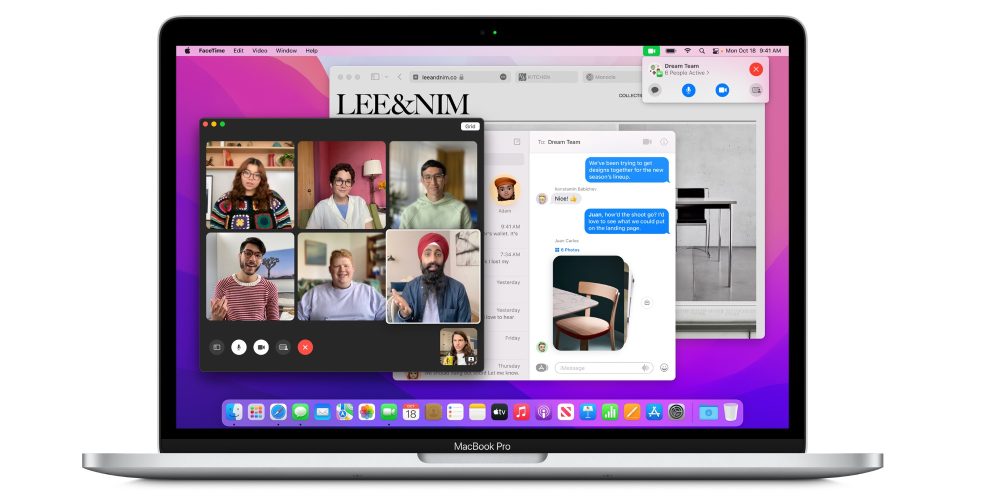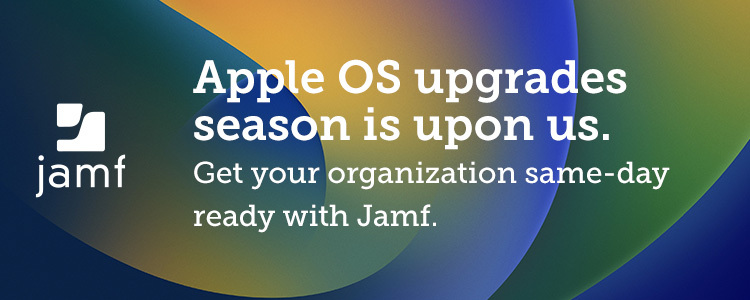Apple at Work is bought to you by Jamf: Get complete management and security solutions for your organization that are enterprise secure, consumer simple, and protect personal privacy with Jamf. Plus you’ll get same-day support for the latest Apple OS upgrades, Today, over 62,000 organizations trust Jamf to manage and secure over 27 million devices.
When iMessage launched with iOS 5, it was really a genius rollout design by Apple. There was no signup – it was automatic. There was no app to download – it was built into the SMS/messages app. There was no UI to learn. It worked just like your normal messaging app; Apple has done a nice job evolving the service. It’s no longer the only messaging app out there, and I believe Apple has an opportunity to turn iMessage into a business chat tool if they expand it outside of the Apple ecosystem. Let’s look at how Apple could build an iMessage @ Work tool to compete against Slack and Microsoft Teams.
About Apple @ Work: Bradley Chambers managed an enterprise IT network from 2009 to 2021. Through his experience deploying and managing firewalls, switches, a mobile device management system, enterprise grade Wi-Fi, 100s of Macs, and 100s of iPads, Bradley will highlight ways in which Apple IT managers deploy Apple devices, build networks to support them, train users, stories from the trenches of IT management, and ways Apple could improve its products for IT departments.
iMessage for Business
Apple has done some of the leg work here by making an iMessage for business communication tool. Apple Messages for Business is a service that your company can use to communicate directly with customers using the Messages app. You can use the power of iMessage to help resolve issues, schedule appointments, make purchases, or make payments with Apple Pay. Businesses can choose to use a Messenger Service Provider (MSP) to manage customer inquiries through Messages for Business. Depending on the messaging configuration you set up, your customers can start a conversation with your business through various entry points like websites, apps, and email. Customers can connect with your business in Apple Maps or by tapping on your phone number inside the app.
If you’ve used Apple Messages for Business as a customer, you know that it’s a straightforward experience. Customers enjoy chatting for support as they do with their friends; they like seamless sharing from iOS and macOS. iMessage is ultimately a streamlined chat app, and I believe that’s ultimately what businesses need today.
I believe it’s time for Apple to deploy an iMessage @ Work tool that could be used in place of Slack or Microsoft Teams. Companies like Spike and Twobird are pioneering this approach with an email app that looks and feels like a chat/messenger app.
If you’ve never tried Spike or Twobird, I highly recommend at least downloading it and signing in with your email account. It’s a revolutionary way to use email. It really highlights what Apple could do with a version of iMessage designed for work that was cross-platform. I think the most important feature of iMessage @ Work would be the ability for users to customize their own workspace. Each user could create a custom profile picture and display name, as well as set up a list of contacts that they consider important to their business and then organize them into different groups and projects. These rooms could be used as project management tools, allowing users to collaborate on a particular task or project with other people in their group. It would make it easy to share files, chat about a project, and more.
Integrated FaceTime

In May of 2020, I wrote about why FaceTime didn’t have its Zoom moment during the COVID lockdowns. I mentioned that lack of access for FaceTime on non-Apple platforms. Apple has since rectified that with the ability to join FaceTime calls from other platforms, but I believe the secret sauce would be the ability to go from chatting with a work from to a quick FaceTime call similar to how Slack allows Huddles. Spike also allows you to quickly move from chatting to calls as well.
Cross Platform
For iMessage @ Work to take off, Apple must expand it to Android, PC, and the web. Right now, iMessage is only available on iOS and macOS. Tim Cook recently dismissed the need for RCS for iPhone. I believe the wrong question was asked, though. iMessage is a great platform, and Apple has an opportunity to expand into business services with a subscription for iMessage @ Work. Apple could charge a per-user subscription fee tied into Managed Apple IDs and User Enrollment. Employees using Apple devices could have a secondary iMessage instance for their work communication while Android and PC users could sign in with their Managed Apple ID to chat with work colleagues.
Wrap up on iMessage @ Work
iMessage @ Work is less about making the consumer version of iMessage work on Android and Windows. It’s more about making a business-specific version of iMessage that works cross-platform. Apple is focused on growing its services revenue, and iMessage @ Work would be an opportunity to do just that.
Apple at Work is bought to you by Jamf: Get complete management and security solutions for your organization that are enterprise secure, consumer simple, and protect personal privacy with Jamf. Plus you’ll get same-day support for the latest Apple OS upgrades, Today, over 62,000 organizations trust Jamf to manage and secure over 27 million devices.

FTC: We use income earning auto affiliate links. More.





